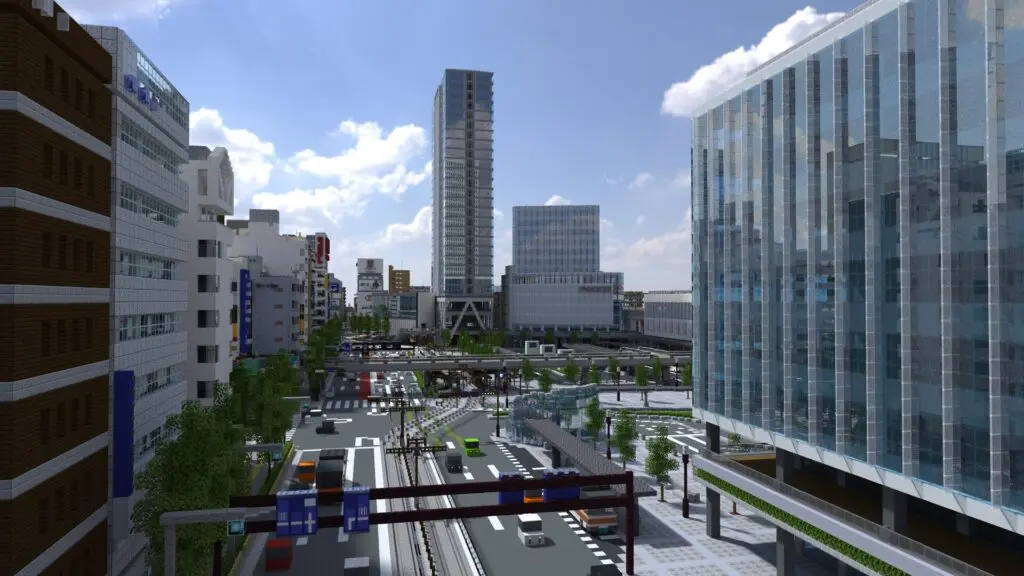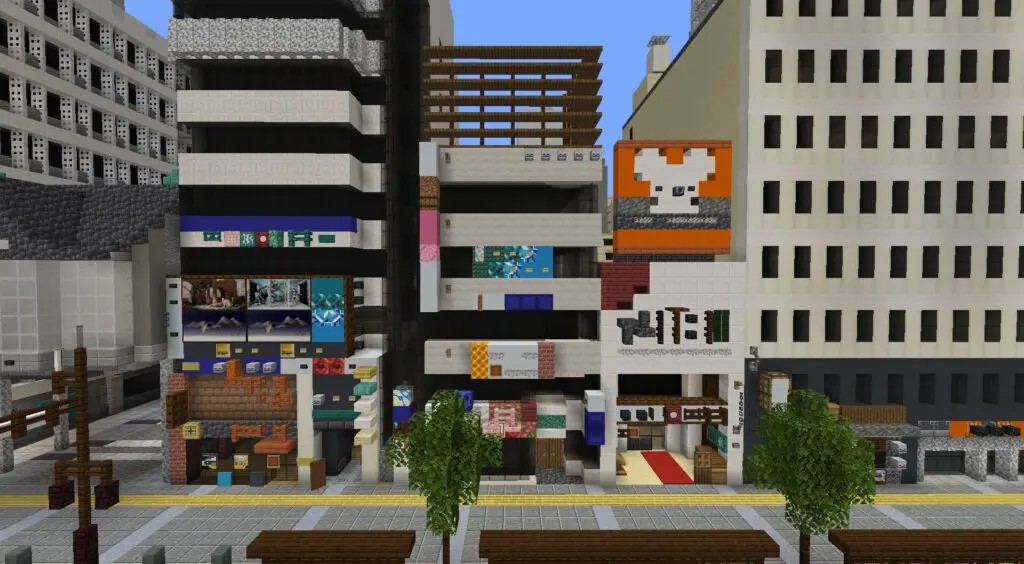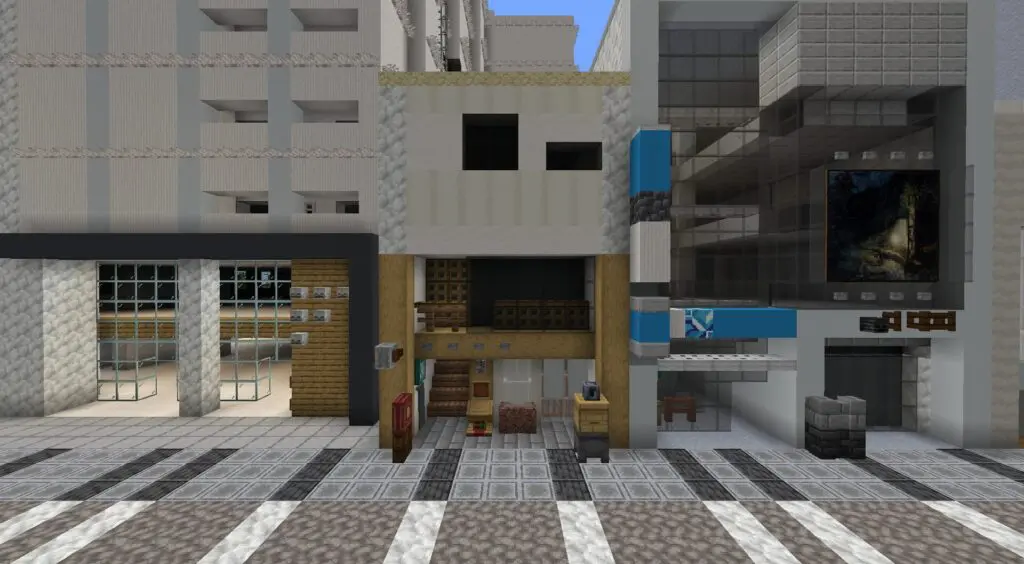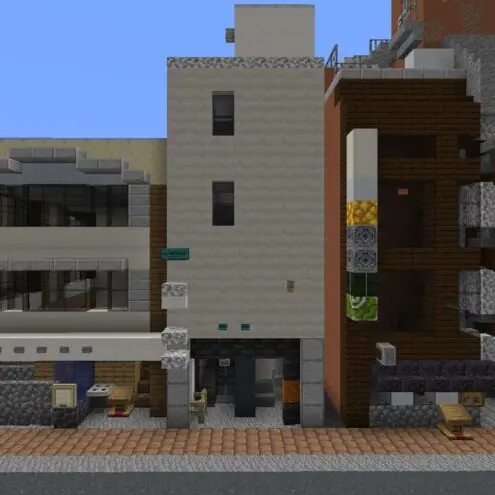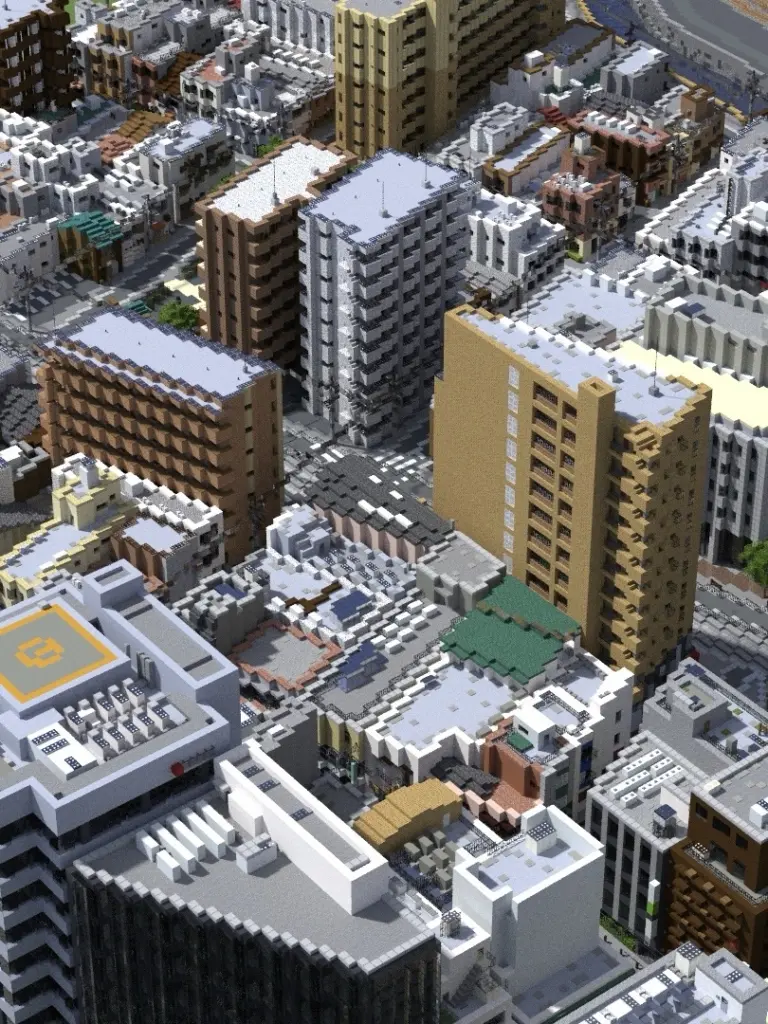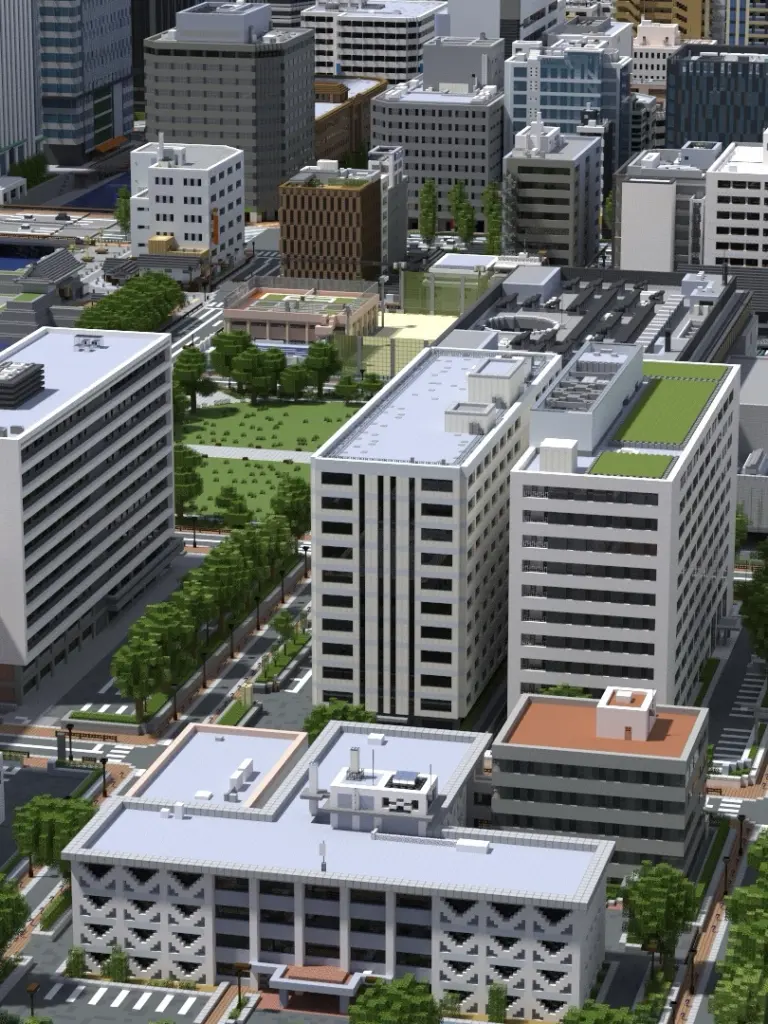Nagamatsu City is a fictional Japanese city created in Minecraft by the city builder known as Eirakucho.
The city’s construction began in 2021, and as of 2024, it spans an urban area of approximately 1.5 km².
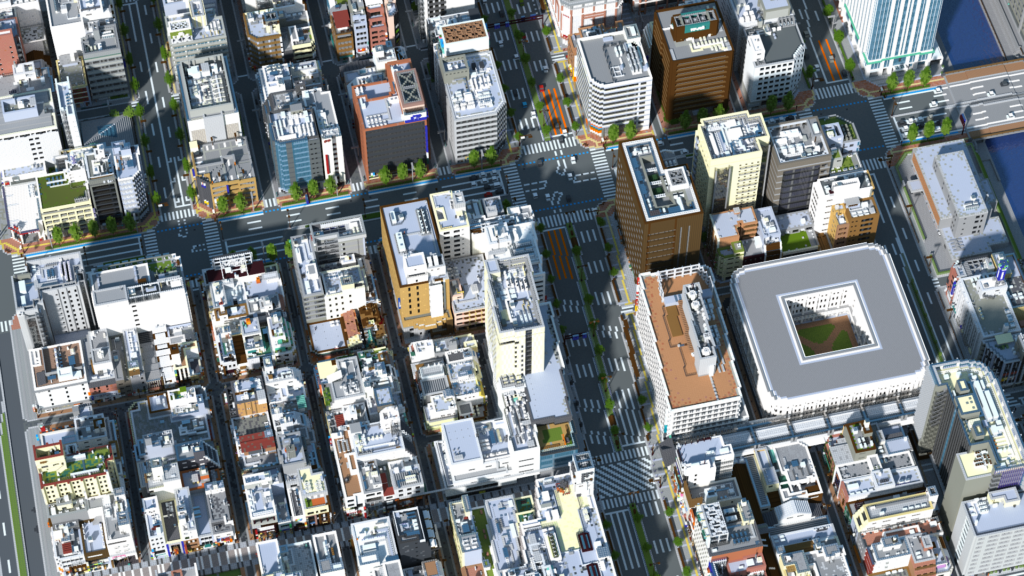
Basic Setting
Nagamatsu City is the capital of Nagamatsu Prefecture, a fictional location somewhere in Japan. It is a government ordinance-designated city with a population of around one million. The city features a well-developed network of wide roads, urban expressways, and railway lines.
The city’s history begins as a castle town established by the Sengoku-period warlord, Lord Shigeno.
Before the development of the castle town, the area was a large sandbank surrounded by rivers to the north, east, and west, and by the sea to the south. At the northern tip of the sandbank stood a small hill.
When one looked out over the sandbank from this hill, they could see a magnificent pine forest, which came to be known as Nagami Matsubara (“Long-View Pine Grove”).
Around the year 1600, Lord Shigeno built a castle on the hill at the northern end of the sandbank and made it the center of his domain.
At that time, the name “Nagami Matsubara” was shortened to Nagamatsu, and later changed to Nagamatsu using more auspicious kanji characters.
This is the origin of the name Nagamatsu.
During the construction of the castle town, a main street (Ōtemichi) was drawn straight south from the hill (where Nagamatsu Castle stood), and streets were laid out in a grid pattern—parallel and perpendicular to this axis.
The blocks were designed as rectangles with short north-south sides, leaving no empty lots within them.
The street layout established at that time still forms the basic framework of Nagamatsu City today.
Transportation Network
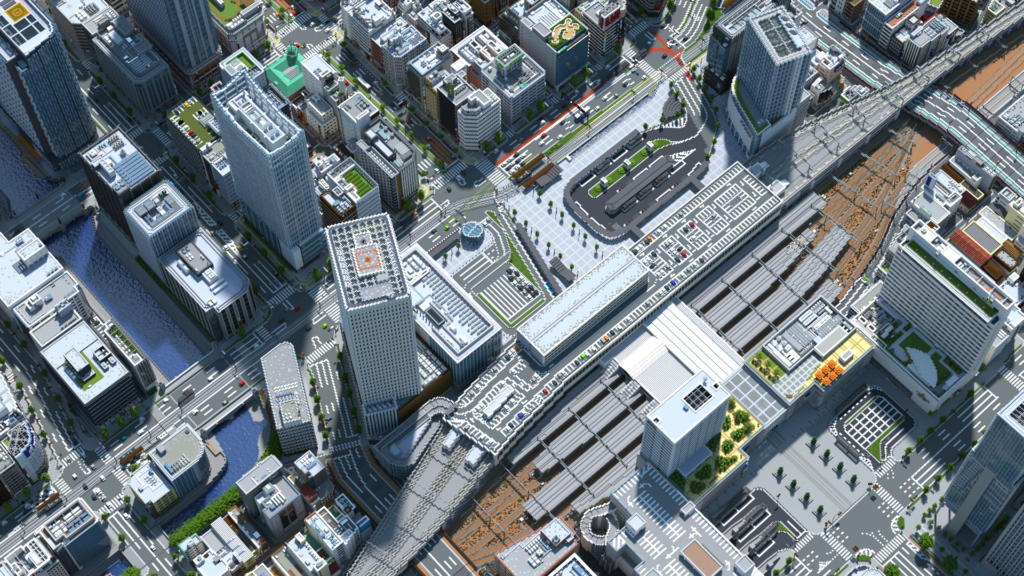
The image above shows Nagamatsu Station, the city’s central hub, and its surrounding area. It serves as a major transportation node where the Shinkansen, conventional rail lines, subway lines, private railways (underground), and streetcars all converge.
Before the arrival of railways, there was a riverside port at this location. After the Meiji Restoration, the opening of the railway led to the filling in of canals, the construction of new roads, and the introduction of streetcars.
However, from the 1930s onward, the increasing use of round taxis and shared buses led to growing traffic congestion. After World War II, a postwar reconstruction urban plan significantly widened the roads to their current widths.
In the 1980s, subway construction began, and today the subway serves as a vital mode of transport for the city’s residents.
As mentioned earlier, the city’s street framework includes narrow Edo-period roads, medium-width roads expanded during the Meiji and Taisho eras, and wide roads developed as part of postwar reconstruction efforts. While these roads differ in scale and function, they complement one another, forming an organic network that supports the flow of people, vehicles, and goods.
Nagamatsu, born as a castle town in early modern Japan, has steadily grown while inheriting its historical legacy.
Photograph
